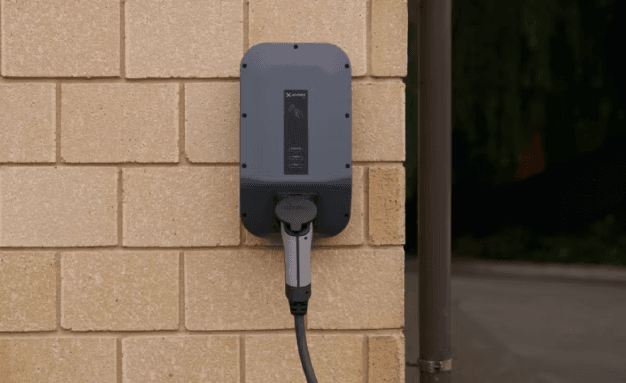A LITTLE HISTORY
You probably don't know this, but the oldest store to serve as a gas station was a German pharmacy in Wiesloch. In 1888, it dispensed petroleum ether.
After the advent of gasoline-powered vehicles and the multiplication of gas stations, the number of gas stations in France increased significantly. Since the 1980s, the number of gas stations has decreased significantly, from more than 41,000 in 1980 to less than 13,000 in 2010. The arrival of electric vehicles and the tightening of already complicated regulations could accelerate this decline.
Today, filling up the tank is not a pleasure, it is a constraining but essential purchase. Faced with these changes, service stations must therefore organize themselves to offer new services and improved payment paths. In addition to traditional payment methods such as cash and credit cards, many service station brands offer alternative solutions.
WHAT ARE THESE SOLUTIONS TODAY?
Today, whether at gas stations or at electric vehicle charging stations, there are different payment solutions, some of which are available at one but not the other. Let's focus on 3 proposed solutions.
Geolocation-based application
Market Pay offers an application with a geolocation-based payment experience for a major retailer in Spain. When arriving at a station, the app launches automatically. The user confirms the pump to be unlocked and authenticates to initiate the payment. All that remains is to fill up and the payment is made from the application. In short, you arrive, help yourself and leave without having to go to the cashier or swipe your card in the payment terminal.
Moreover, thanks to geolocation, you can easily find an available pump, which saves you a lot of time. This innovative solution meets a need for speed and ease of use for a time-consuming task. Eventually, this application could be deployed in other service station networks.
Fleet card
Even if you are not obliged to take it, a fleet card can be offered to you when you acquire an electric vehicle. This card, provided by the car manufacturer, gives you access to all the brand's charging stations. All you have to do is find a station and swipe your card.
The card is linked to the payment information that has been filled in beforehand to make the transaction. It's a quick and easy way to operate, but it's not without its drawbacks.
With a brand-specific fleet card, you only have access to the recharging stations associated with that brand, which considerably reduces your scope of action. If there are none close enough to your home, it quickly becomes complicated. Fortunately, there is another solution to this problem.
Mobility operators
As mentioned just above, access to only one brand of charging stations can quickly become a problem. That's where the mobility operators come in. In principle, it's the same thing. Users have a card or badge that they can use at a charging station to make the payment.
The difference is that the mobility operator connects you to several networks of charging stations, while the fleet card limits you to one. This makes it much easier to access the charging stations available around you. However, compared to using a fleet card, using a mobility operator is more expensive.
Although not mentioned above, credit card payment is not available for most electric charging stations. This forces electric vehicle owners to purchase a subscription from a fleet card or network operator. This is a blocking point for users who mainly charge their vehicles at home and do not need such a subscription.
In France, a deputy had questioned the government in order to ask for the possibility to pay directly by card to recharge his car. Indeed, today, the number of recharging stations is still reduced and has difficulty to develop. The addition of popular payment methods such as credit cards would facilitate the use of charging stations and would undoubtedly contribute to the increase in their installation.
Filling up has never been a pleasant part of the day. Therefore, there is a need to offer a wide range of choices to enhance the user experience.
In a competitive environment where the number of service stations is decreasing due to specific regulations and where charging stations are multiplying as well as the operators offering them, it is essential to stand out and offer the best possible solutions.
WHAT DOES THE FUTURE HOLD?
Today, the evolution of payment methods tends to erase the physical elements and reduce interactions. Yesterday, to pay for fuel, we had to insert our payment card into a terminal and enter the code. Today, we can pay without contact with our card, or even with our smartphone, without having to enter a code (except in France where payment with a smartphone is forbidden in gas stations). Tomorrow, we will probably be able to pay directly from the vehicle.
The idea of integrating payment into the vehicle is not new. At CES 2016 in Las Vegas, the car wallet functionality was already presented. Since then, the idea has evolved to better meet the need and should be an integral part of our vehicles within a few years.
Once you fill up your car, you won't have to worry about paying. The car, which has been given your payment details beforehand, will take care of this step on its own. In addition to paying for fuel, you will be able to make transactions for other services, such as drive-throughs or tolls.
We talked about it before, Market Pay is working on its application to perfect it so that it meets all the expectations of users. In addition to that, we are keeping an eye on the market to offer even more innovative solutions.
And in the near future, we could integrate your vehicle to assist you in your payments. Who knows?





